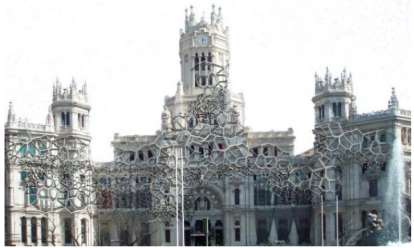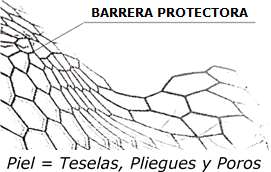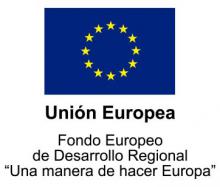PIELSEN

The project PIELSEN, with reference RTC-2017-5945-3, has been co-financed by the Ministry of Economy and Competitiveness, and by the FEDER fund in the call for Retos-Colaboración del Programa Estatal de Investigación, Desarrollo e Innovación Orientada a los Retos de la Sociedad. 2017.Retos-Colaboración del Programa Estatal de Investigación, Desarrollo e Innovación Orientada a los Retos de la Sociedad. 2017.
Our body self-regulation to maintain internal balance against changes in the external environment is known as homeostasis. The human skin is regulating the exchanges between the internal organism and the external environment: thermal, acoustic, pressure or tactile, among others. As aids to that homeostasis, clothing and architecture supply the differential that causes biological imbalance. Thus, the work of architecture is the material response of the human being to the aggressive factors of the environment against its biological balance, allowing the territory to inhabit. The permeable or passive façades, sometimes reactive (solar, piezoelectric...) or active in others, should be designed to respond with the body, in this case the construction, generating an interstitial space between elements assimilable to the homeostatic skin that reacts according to the environment , preserving the conditions of the interior of the houses, the habitability and the health of the occupants.
The main objective is the development of an envelope for buildings as a SENsible SKIN (intelligent homeostatic envelope).facades, sometimes reactive (solar, piezoelectric ...) or active in others, should be designed to respond with the body, in this case the construction, generating an interstitial space between elements assimilable to the homeostatic skin that reacts according to the environment , preserving the conditions of the interior of the houses, the habitability and the health of the occupants. The main objective is the development of an envelope for buildings as a SENsible SKIN (intelligent homeostatic envelope).

3 structural components (3P) will be designed: (i) Pores = RF sensors in 3D mesh network, (ii) Skin = smart envelope biomaterial tiles (polyhydrogel / piezoelectric polymer) and (iii) Folds = support structure of the envelope of others biomaterials.
It is started in the Poro, RF / IoT microsensor embedded in the facade, self-powered by energy harvesting techniques (photovoltaics, wind, electromagnetic...) in a customizable way. The signals will activate the integrated bio-movements of folds and skin that allows a response of the whole.

The building skin will have different tesserae (piezoelectric self-energetic hydrographic polymers) as innovative bioenvolvents with sought-after functions (light control, temperature, noise, polluting agents, pollen, etc.) so that according to the building conditions (hospitals, airports, stations, offices, residences ...) are used the most suitable energetically for the completion of the skin. All on a solid constructive structure of adaptive folds (tensile) and pores sensors (3D sensors) to respond to light, thermal or wind push stimuli, generating their own energy extracted from the environment.

The reactive stimuli (3P) generate formal, material, structural, energy and communication imbalances between them, and thanks to their adaptive properties they give rise to the instability of the whole, making successive changes of equilibrium through the exchange of information and energy. The ecosystem is readapted instantaneously by material deformity.
Everything works as an interconnected nodal-neuronal network with an adaptive functioning according to the climate, achieving a homeostatic envelope that reacts alone to the environment, with clean energies and a circular economy for greater comfort, habitability and citizen health in the livable interiors.
Keys: Self-supply by latent energies; Layers connectivity (RF / IoT); Biomaterials poly (γ-benzyl α, L-glutamate) (PBLG) as synthetic poly (α-amino acids) with the highest electrical dipoleBiomaterials poly (γ-benzyl α, L-glutamate) (PBLG) as synthetic poly (α-amino acids) with the highest electrical dipole
moment among all organic molecules. Unlike conventional ceramics based on crystalline networks, the PBLG dipole originates from the hydrogen bonds of the helical spine and is much more resistant to impurities. The extreme solubility of PBLG in organic solvents allows chemical processes with electrospinning combined with the chemical diversity of α-helical poly (α-amino acids), electrospun fibers of PBLG for mechanical biological systems, electro-optical and electromechanical materials for energy harvesting and Dynamics of complex structures on physical theory of continuous groups.crystalline networks, the PBLG dipole originates from the hydrogen bonds of the helical spine and is much more resistant to impurities. The extreme solubility of PBLG in organic solvents allows chemical processes with electrospinning combined with the chemical diversity of α-helical poly (α-amino acids), electrospun fibers of PBLG for mechanical biological systems, electro-optical and electromechanical materials for energy harvesting and Dynamics of complex structures on physical theory of continuous groups.





